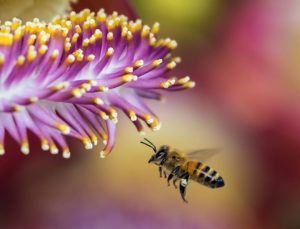
The tongue of the dance, which is passed on to pollen, slowly dies.
Of the approximately 500 still existing bee species, about a dozen use the “language of dance”. Through a series of ritual movements lasting from several seconds to several minutes, hive neighbors receive coded information about the location of the food source, its quantity, distance to it, and the like. It is believed that this mechanism has an extremely long history and the “dance of the bees” has evolved over 20 million years. However, in our time, he seems to be dying.
In an article published in the journal Science Advances, German and Swiss biologists reported on the results of field observations of Apis mellifera honey bees. The authors expected that the colonies, more active dance practitioners, should collect resources more efficiently and produce more honey. However, during the observation process, it was found that the duration of the dance is shortened in some colonies. And with this reduction, they produce more and more honey.
Apparently, in such colonies the “traditional dance” is gradually being replaced by a less poetic, but more practical strategy under modern conditions. Insects cease to coordinate their searches, and each working individual collects independently of the others. Scientists suggest that the reason for this – a person, more precisely, how unpredictable, quickly and constantly he changes the landscape. The forest may disappear in a day, and one monotonous type of plants on the fields for the next season may completely change to others – perhaps a less calculating approach to collecting nectar in these conditions justifies itself.
To test this hypothesis, scientists conducted experiments with eight colonies of bees, each of which consisted of 15-25 thousand workers. Some, the control, colonies lived a normal life and, as is their characteristic, danced. To other authors, they artificially violated the possibility of using dances to exchange information. Their nests were kept in the dark and turned from time to time, which did not allow to orient according to the figures of the dance.
Under these conditions, the researchers observed the process of the “death of the dance” in the bee colony. Time after time making sure that the dances stopped bringing significant information, the insects showed less interest to them and spent less and less time watching the dancing individuals. They proceeded to an independent collection of resources: the colony adapted its behavior and began to act with high efficiency.
Picture Credit: Pexels
